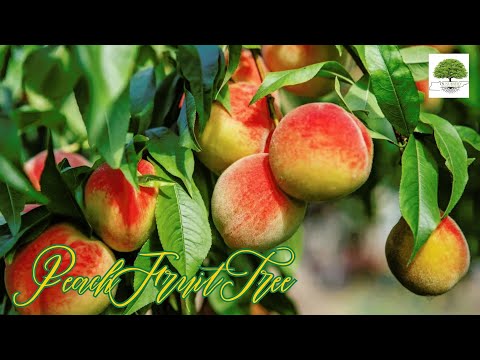Dwarf Patio Peach
The Dwarf Patio Peach (Prunus Persica) truly lives up to its name. This tree is tiny by tree standards, reaching only 6 ft tall at maximum and 4 ft on average. Its best season is spring, but it is an early-season plant, so you can enjoy its blooms starting in March.
This pink beauty is perfect for an accent plant in a small space, or as a low border plant. Flanking your home’s walkway with this peach tree is sure to be a fabulous show come springtime.

Prunus Persica Plant Details
Family: Rosaceae
Light Requirement: Full sun
Water Needs: Moderate
Height: 6-4 ft
Spread: 6-4 ft
Soil Preference: Moist, well-drained, Acidic
Season of Interest: Spring
Flower Color: Pink, Red
Fruit: Peach
Wildlife Value: Bees, Butterflies
Notable Characteristics
This Small Patio Peach Tree is a cultivar of the Peach Tree native to China. Peaches were spread to other parts of the world via trade routes like the Silk Road, and this cultivar followed.
It is popular for its small size and was mainly cultivated for ornamental use. Its fruit is large and fleshy. It is prized for its small size because it fits perfectly on patios.
The dwarf patio peach tree leaves are long and narrow, with a lovely, deep reddish hue that retains its color throughout the entire growing season. The branches are thick and woody, packed tightly with dense foliage and large flowers surrounding the whole branch. The pink flowers and their pink stamen pop beautifully against the red leaves.
Landscape and Maintenance
The colors and size of the Dwarf patio flowers can also be compromised by cold weather or late frosts. However, this magnificent tree packs a large punch despite its size, and is well worth including in your garden scape.

Exposure
Apricot fruit trees thrive in full sun, requiring 6 to 8 hours of sunlight daily. They favor a sunny spot with well-drained soil to ensure healthy growth, abundant fruit production, and optimal ripening of the apricots.
Height at Maturity
Under 25 Feet
Usage
Fruit
Shipped As
Bare-root
Ships
UPS
Planting Zones
4-9



